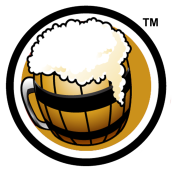Hops
|
Amount
|
Variety
|
Cost
|
Type
|
AA
|
Use
|
Time
|
IBU
|
Bill %
|
|
3.50 oz |
Chinook3.5 oz Chinook Hops |
|
Pellet |
13 |
Boil
|
75 min |
95.66 |
24.6% |
|
1.50 oz |
Cascade1.5 oz Cascade Hops |
|
Pellet |
7 |
Boil
|
45 min |
19.39 |
10.5% |
|
1.25 oz |
Centennial1.25 oz Centennial Hops |
|
Pellet |
10 |
Boil
|
30 min |
19.33 |
8.8% |
|
2 oz |
Cascade2 oz Cascade Hops |
|
Pellet |
7 |
Whirlpool
|
0 min |
9.53 |
14% |
|
2 oz |
Cascade2 oz Cascade Hops |
|
Pellet |
7 |
Dry Hop
|
0 days |
|
14% |
|
1 oz |
Centennial1 oz Centennial Hops |
|
Pellet |
10 |
Dry Hop
|
0 days |
|
7% |
|
0.75 oz |
Columbus0.75 oz Columbus Hops |
|
Pellet |
15 |
Dry Hop
|
0 days |
|
5.3% |
|
1.50 oz |
Cascade1.5 oz Cascade Hops |
|
Pellet |
7 |
Dry Hop
|
0 days |
|
10.5% |
|
0.75 oz |
Centennial0.75 oz Centennial Hops |
|
Pellet |
10 |
Dry Hop
|
0 days |
|
5.3% |
|
14.25 oz
/ $ 0.00
|
Hops Summary
|
Amount
|
Variety
|
Cost
|
IBU
|
Bill %
|
|
3.50 oz |
Chinook (Pellet) 3.499999991994 oz Chinook (Pellet) Hops |
|
95.66 |
24.6% |
|
7 oz |
Cascade (Pellet) 6.999999983988 oz Cascade (Pellet) Hops |
|
28.92 |
49% |
|
3 oz |
Centennial (Pellet) 2.9999999931377 oz Centennial (Pellet) Hops |
|
19.33 |
21.1% |
|
0.75 oz |
Columbus (Pellet) 0.74999999828443 oz Columbus (Pellet) Hops |
|
|
5.3% |
|
14.25 oz
/ $ 0.00
|
Other Ingredients
|
Amount
|
Name
|
Cost
|
Type
|
Use
|
Time
|
|
2 tsp |
Yeast Nutrient
|
|
Other |
Mash |
0 min. |
|
0.50 oz |
Oak Chips
|
|
Water Agt |
Other |
0 min. |
Target Water Profile
Balanced Profile
Notes
Mill the grains and mash at 156°F (69°C) for 30 minutes (or as long it takes to pass the iodine test). Vorlauf until your runnings are clear, then run off into the kettle. Sparge the grains with 168°F (76°C) water and top up as necessary to get about 6.6 gallons (25 liters) of wort—or more, depending on your evaporation rate. Boil for 75 minutes, following the schedule for the boil hops.
After the boil, chill the wort to about 64–66°F (18–19°C). Aerate well, add the yeast nutrient, and pitch plenty of healthy yeast. Ferment at 68°F (20°C) until it reaches final gravity, then give it 2 more days to clear diacetyl. Chill to 42°F (6°C) if possible (if not, proceed at 68°F (20°C), but reduce the oak chips by half). Prepare and sanitize a secondary fermentor and place the oak chips and whole-cone hops in a weighted hop bag. Purge the secondary fermentor with CO2 before racking beer into it and adding the first round of dry hops. If possible (i.e., using a conical), dump the cone after the first 3 days, then add the second round of dry hops. After 3 more days (if possible), dump the hops again. Allow up to 2 weeks to clear diacetyl (see below), then crash, package, and carbonate.
BREWER’S NOTES
Very important: On the day of the first dry hop, take a gravity reading of the beer and note this in your brew log. This exercise will be particularly helpful as it relates to hop creep. Three days after the second dry hop, take a gravity reading and note it. Do the same the following day. Once you go 2 days in a row where your gravity has not dropped from the secondary fermentation from hop creep, you can proceed with bottling or kegging. Depending on your conditions, you might have to wait up to 2 weeks to clear the diacetyl from hop creep. (For more about hop creep and testing for diacetyl, see Brewing with Hops: Don’t Get Creeped Out and Hunting for Diacetyl.)
About those bittering hops: There is a limit to how much alpha acid can be isomerized in beer and also to how much can be perceived. While the calculated IBUs for this recipe might be about 195, a spectrometer reading measured them closer to 80. (The yeast also take up a large portion of isomerized alpha acids, which is why the yeast from an IPA fermentation tastes so bitter.)

Last Updated and Sharing

- Public: Yup, Shared
- Last Updated: 2022-11-12 23:40 UTC
For quick copying and pasting to a text based forum or email.
Click the Download as HTML file button below.
Recipe costs can be adjusted by changing the batch size. They won't be saved but will give you an idea of costs if your final yield was different.
|
Cost $ |
Cost % |
| Fermentables |
$ |
|
Steeping Grains
(Extract Only) |
$ |
|
| Hops |
$ |
|
| Yeast |
$ |
|
| Other |
$ |
|
| Cost Per Barrel |
$ 0.00 |
|
| Cost Per Pint |
$ 0.00 |
|
| Total Cost |
$ 0.00 |
|
Discussion about this recipe:
